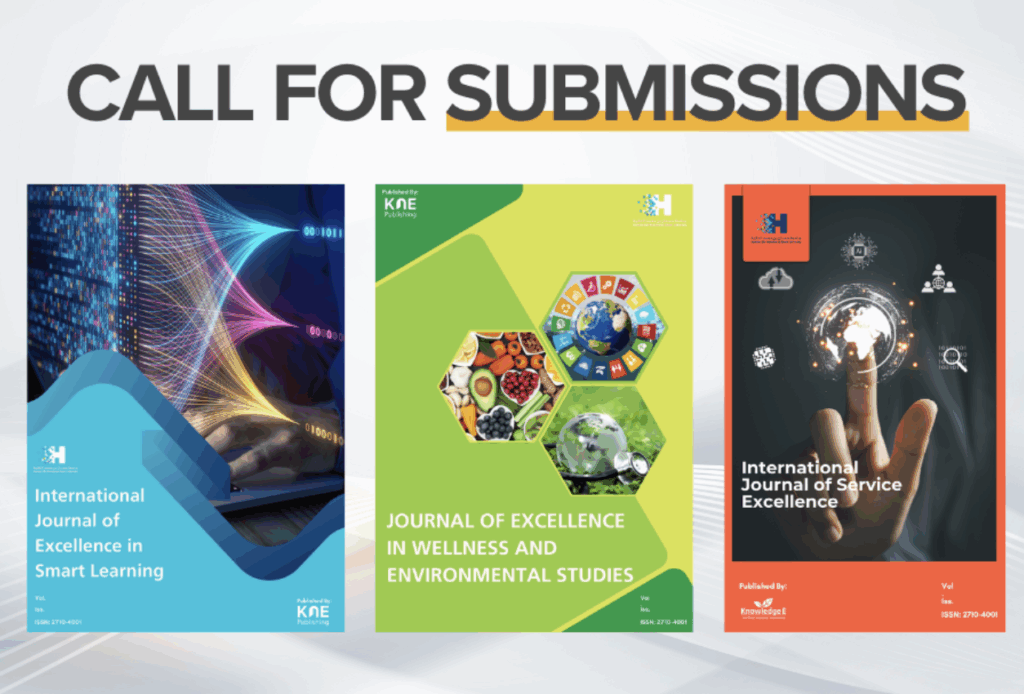“Beyond the logistical side of things, what does it really mean to build a school?”
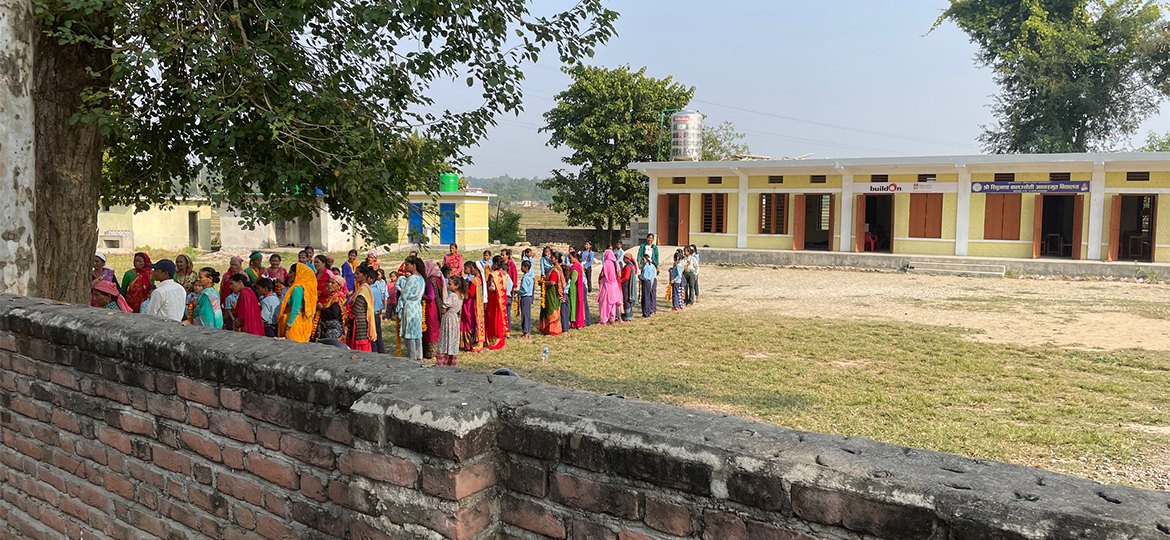
This was the question that lingered in the minds of our daughters, Lucie and Nina, years ago, when my wife and I returned from a transformative school-building expedition in Malawi. Attempting to convey the profound impact proved challenging; we spoke of poverty, emphasised the fundamental role of education for millions of children living a reality so distant from our own, and shared vivid imagery through photos and videos. Yet, we soon realised that some experiences must be lived to be truly understood.
We went to Malawi in 2018 together with my colleagues at the time, Phil and Kamran, to build the school in a remote community in one of the absolutely poorest parts of the world. This was the first school funded by the Knowledge E Foundation (KnE Foundation), initiated by Knowledge E’s founder Kamran. Ever since, the KnE Foundation has funded one school per year in developing countries, in collaboration with Dubai Cares and often entrusting buildOn to expertly orchestrate the construction from start to finish.
For me personally, that experience made a profound impact on my own perspective on so many aspects of life. Now, Lucie has turned 17 and decided she wanted to gain this experience herself.

As the date of our trip approached, our excitement grew. Our buildOn trek leader, Luke Doverspike, inspired us with his deep love and passion for Nepal during our pre-trek talks. The meticulous guidance through the programme transformed preparations into a seamless process—vaccinations, Nepali language lessons, battery packs, camping gear, and thoughtful gifts for the community, and our host family fell effortlessly into place.
Our journey unfolded from a chilly October evening in France, traversing borders and airports. A 24-hour odyssey later, we landed in Kathmandu. We were still far from our final destination, but we were already feeling the palpable shift to a different world.
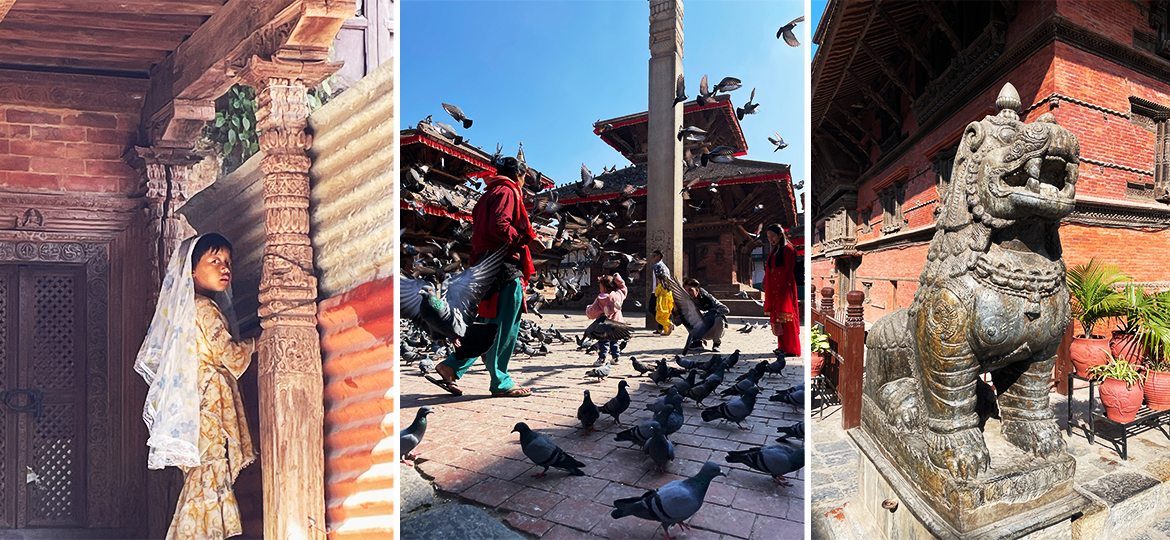
We stayed at Hotel Thamel, in the most touristic part of Kathmandu. Upon arrival, we met up with Luke and Jharana, buildOn’s trek coordinator for Nepal and other countries with an impressive 105 treks under her belt. They took us out for a lovely Nepali dinner with delicious Momos. Back at the hotel, we quickly crashed into our beds, tired after the long journey but super excited by our first impressions of Nepali food, culture, and language.
The subsequent day unveiled the city’s cultural treasures through a private guided tour, offering a glimpse into the impressive and often UNESCO-protected sites Kathmandu offers. We were fascinated by the Hindu and Buddhist sites, with multi-story temples, fantasy-like sculptures, and the many monkeys that joyfully climbed the stupas and posed in front of our cameras. We learned about Nepal’s history, religion, and culture and started to see this multi-cultural country in its context, with a royal bloodbath and an abdicated king, the role of the virgin goddess, experiencing the ongoing Dashain festival, witnessing a Hindu cremation ceremony, and getting a lecture at a Tanka painting school and another about Chakra bowls and sound therapy.
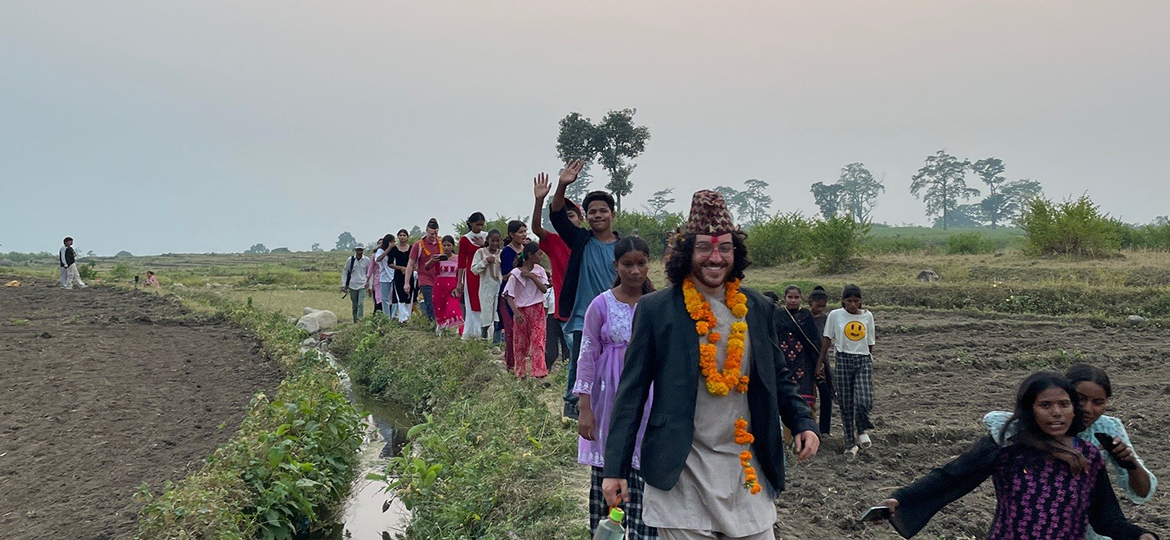
In the evening we finally got to meet the others and were very happy that this group let us, outsiders, join them. It turned out to be a fabulous team of nine dynamic individuals, all associated with PricewaterhouseCoopers (PwC). Most of them had an even longer journey behind them, from the Bay area in California, and others from Chicago, New York, and Barcelona. On behalf of Knowledge E, it was only myself and Lucie. Though, and as the Knowledge E Foundation had already adopted several schools, the team remained very eager to keep up this tradition and take part in building the schools to come! For this trip, however, KnE team was held up with other time-pressing commitments that coincided with the trip and was unable to attend this time around.
The following morning, we continued our journey towards Kolmuda, the community in western Nepal where we would build the school. This took on the semblance of a school trip. Luke and Jharana assumed a parental role, safeguarding our passports, checking luggage, and ensuring our safe passage to our hotel in Dhangadhi, our next stop. The flight alone offered breath-taking views of the Annapurna mountains and peaks above 8,000m that were well above our own flight altitude.
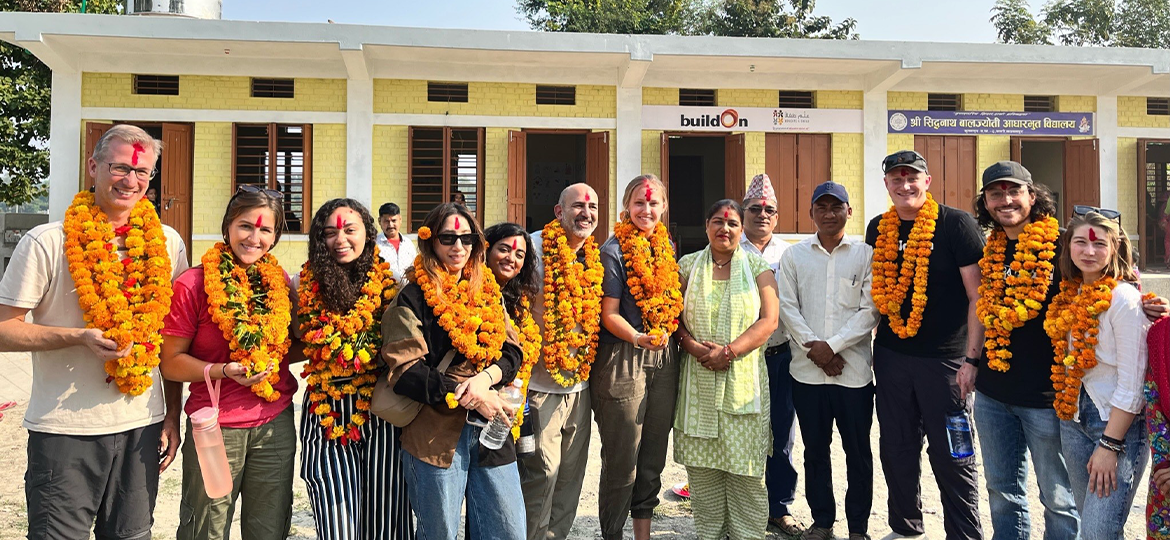
In Dhangadhi, we met the rest of the buildOn team who made our trip unforgettable. First we met charming Anu, who would continuously lift our spirits through her dance moves, wit, and ability to transform from teacher to ninja, pirate, yoga instructor, translator, or standup comedian; Santosh with his ever-calm temper, translating and explaining the most intricate situations; Ujwal and Runam as two new, but fast-learning translators; Karbir who led and coordinated the actual construction work and who got us in the right mood every morning through his hilarious contribution during our laughing yoga; and Sridevi and Lila ensuring we got splendid food and stayed healthy.
At the hotel we were introduced to our stable food for the coming week, dal bhat (dal = lentils; bhat = rice), got a language lesson and a further briefing of what to expect, how to behave and what to do. All of this on and off in the dark, in pace with the power cuts.
The following morning, we all took our last real shower for quite a few days, loaded our bags on top of the bus and got on our way to Kolmuda. After less than an hour on narrowing roads, we arrived to the community and got to be the very first people to use the new school road. Hundreds of people had gathered, with drums playing, children dancing and singing, and even a reporter from TV Today Nepal filming our every step, as we got our tikas (red mark on the forehead), topi (hat), khada (scarf) and more and more of the beautiful garlands made of fresh orange flowers.

The following four-hour welcome ceremony included a mix of students singing and dancing, speeches from the many officials, including the region’s mayor, as well as signing the covenant and breaking ground. It was fascinating to see how all these formalities were combined with traditional ceremonial practices, blessing the school and everyone involved. Flowers were thrown on stones carrying signs of good fortune, very similar to the swastika as we know it, with the air filled with the smoke of incense. Altogether, this symbolised the strong commitment from everyone in the community and the buildOn team to work together to build this school.
The school is named Shree Durga, which I think means “Goddess of Energy”, which would be very fitting seen to the stunning and energising nature in Kolmuda. The community is tucked away in a beautiful valley with a gentle river and plenty of rice fields all around, surrounded by lush green hills. It’s peaceful, and it feels like time has stood still here for hundreds of years – well, for the most part.
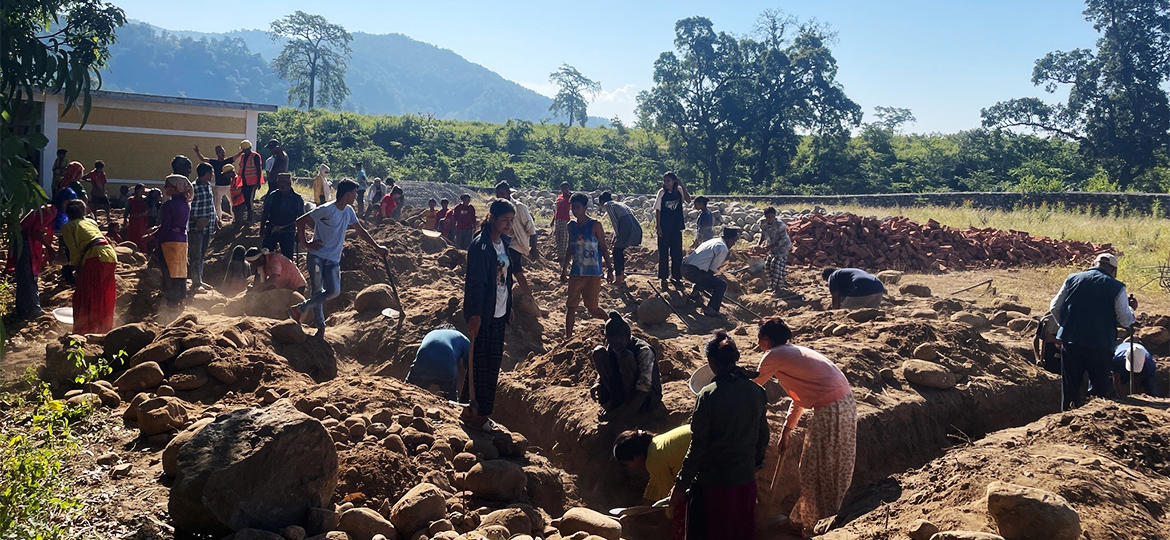
While people are still ploughing the fields with the help of oxen and cooking over open fire, this time travel experience stands in stark contrast to the many smartphones we were very surprised to see the children creating TikTok videos with. We later understood the reason. Many of the men of this community work in India and bring phones back to enable the family to stay in contact. One of the school blocks is also quite modern, built by buildOn three years prior, with a commitment to build another two to replace the other precarious buildings that have been badly damaged by the devastating earthquake in 2015.
With a population of 2,500, the town would surely benefit from building the school which serves over 450 students from grades 1 to 10, guided by 14 teachers. This means that the classes are large, ranging from 30 to 60 students, and everyone typically going to school from 9 am to 2 pm six days a week, with only Saturdays offering a respite. Post-school hours, most children work in the fields – rice half of the year and wheat the other half. This is complemented with different types of lentils and various spices, along with a rare goat or chicken as meat.

After the welcome ceremony we finally got to meet our host families. This unfolded into a delightful chaos as curious children surrounded us. I’m simply amazed by children. Their curiosity about the world, to learn, explore and have fun at the same time is truly wonderful. The joy of interacting with them transcended language barriers, and evenings at our host house turned into cultural exchanges, with dances and laughter becoming the universal language. Though my new Nepali dance moves were quite embarrassing to Lucie, there is in return now a rapidly growing group, in a remote part of Nepal, dancing the macarena, madison, waltz, and bugg.
The week that followed was a whirlwind of activity, beginning with a yoga session led by buildOn’s yoga guru every morning at 6 AM. After a somewhat spicy breakfast with chai warming us up during the chilly mornings, we went on a 15-minute hike across the rice fields to the work site. The remaining four hours until noon was hard work digging, rebarring, sand sifting, and more digging. The sweat was in free flow as the sun quickly turned up the heat and humidity.

After a well-needed lunch break, the afternoons were dedicated to cultural activities. We went fishing in the river (without getting any fish to Lucie’s delight), helping a blacksmith produce a sickle, having eye-opening gender talks, and when time permitted, taking the opportunity to play ultimate frisbee with the kids. Ultimate immediately became very popular. Maybe it’ll beat cricket as Nepal’s national sport one day. Who knows?!
The time to say goodbye came too soon. Since we had been welcomed with open arms, open minds, and open hearts, it felt like we had become part of the community, no longer simply guests and foreigners. With Nepal and so many new friends now in our hearts, the separation was filled with emotions, and unavoidable tears came flooding in as we realised we may never see each other again. That said, Lucie declared that she wants to go on further school building treks with the same team.
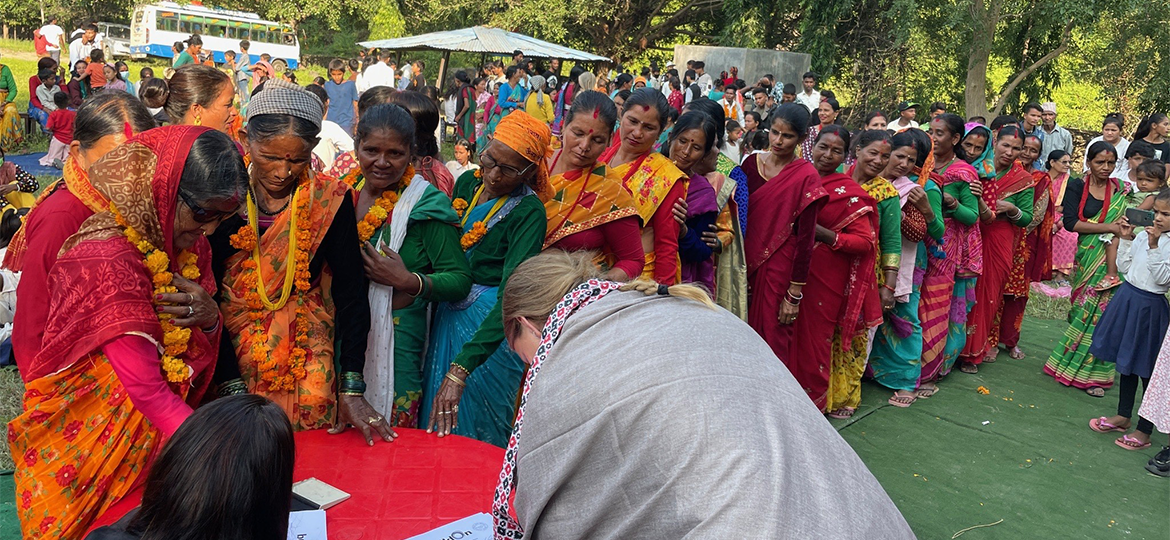
Reflecting on what we had experienced, we could see so much good coming out of it. The tangible, in terms of a new school block, giving the children better possibilities to learn and achieve the future they’re dreaming of; but also, the intangible values of compassion, togetherness, sharing, and caring that we mutually felt so strongly.
During a prep session, Luke prompted us to share what makes us happy. Lucie’s words turned out to capture our experience spot on – “It makes me happy when I make others happy!” As we share our experiences, I hope they bring you happiness too and perhaps, inspire you to spread joy in your own way.


